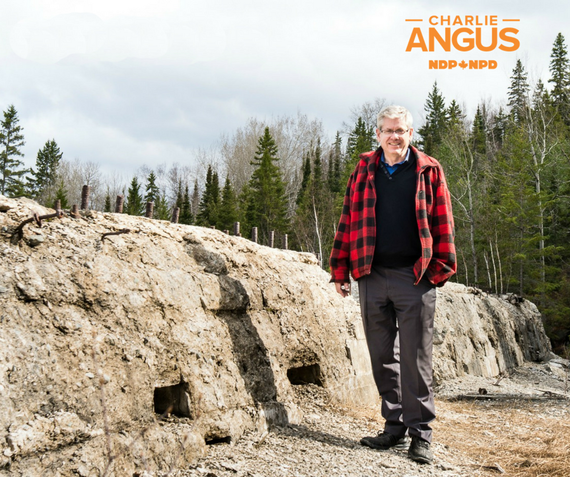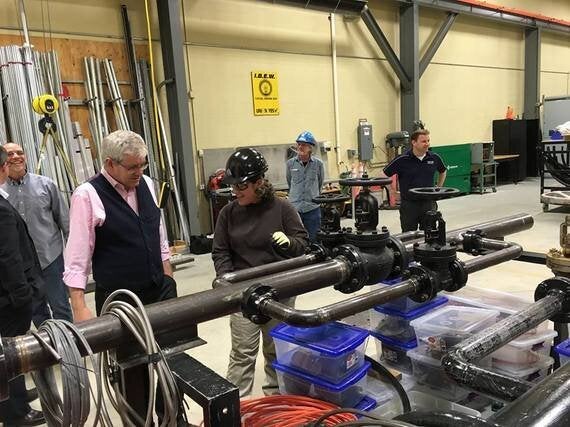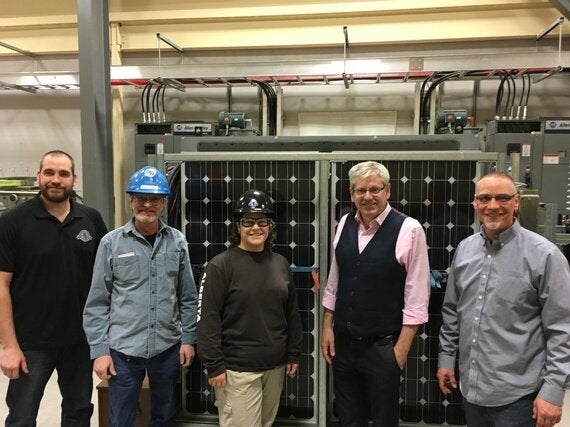Canadians want action on climate change they are frustrated by the inability of Canada to develop a credible path forward. For years, governments that have mouthed platitudes about reducing greenhouse gas emissions while making no credible efforts to meet our international obligations. Year in and year out, Canada's GHG emissions continue to rise along with the lame promises from government.
In fact, a recent report commissioned by Natural Resources Canada states that Canada is nowhere near able to meet even the limited objectives laid out by the Paris Accord. It is time for bold action. This is the reason I am proposing a national Carbon Budget Council to establish a clear path forward.
The National Carbon Budget is a strategy that has worked very well in both England and Scotland for identifying the emission targets that must be met and the steps required to transform energy use. The Carbon Budget has worked well under Labour, Conservative and SNP governments. They have not only met their targets they have helped moved towards a renewable economy.

This kind of coherent strategy has been lacking in Canada. For the last number of years, all our attention has been focused on the flash points of whether to promote or oppose pipelines while no little discussion has been focused on what we need to achieve our international obligations and what steps will get us there.
So how would a Carbon Budget Council work in Canada? The first step would be for the federal government to legislate the hard caps on emissions that are required to meet our international obligations. The Council would be established with credible independent experts tasked with the mandate to use the tools and investments necessary to work with industry, provinces and municipalities on ensuring that the cap is met.
What is missing from the Canadian political discussion is that meeting our international targets isn't simply about making sacrifices, it is about making the most of real opportunities that are staring us in the face. And nowhere are those opportunities more possible than in Alberta.

Last month I was in Edmonton meeting with members of the International Brotherhood of Electrical Workers (IBEW). They work in the oil sands and refineries of Alberta. They are also working to promote the incredible potential that lies in the province for the development of solar and wind technology. In Germany, the decision to switch from nuclear to wind and solar has created hundreds of thousands of jobs. And yet the best locations for solar in Germany don't come close to the potential of the big prairie sky country of central and southern Alberta.
The Notley government has made record investments in renewables in their attempt to diversify Alberta's heavy reliance on oil and gas but where is the Prime Minister? With the downturn in the oil patch now is the time to begin the investments towards a diversified energy future. This transition of the prairie economy is not simply the job of Alberta or Saskatchewan. Our national economy has benefited for decades from the heavy investments and subsidizing of the oil sector. To meet our international obligations will require a major national effort working with oil producing regions like Alberta, Saskatchewan and Newfoundland and Labrador. As NDP leader I will ensure that serious efforts are made to provide a diversified energy economy. To do this requires four essential tools:
1)The establishment of legislated caps on the production of GHGs.
2)The establishment of a national Carbon Budget Council.
3)The establishment of a Renewable Energy Crown Corporation with the mandate to invest in public infrastructure projects and public energy projects in partnership with provinces, territories, municipalities and First Nations.
4)Working with industry to achieve efficiencies.

So why a Renewable Energy Crown Corporation? By maintaining investment in the sector through public projects we can source materials and products from Canadian companies which will kick start the manufacturing sector in Canada. This federal investment corporation will be incentive for provinces, territories, municipalities and First Nation communities to sign on. My plan is in sharp contrast to the Wynne government's debacle of promoting private energy projects that jacked up the costs of hydro while giving no manufacturing benefit to Ontarians.
Questions over new carbon infrastructure like pipelines will be assessed through their impacts on the legislated carbon limits. When I speak with leaders in the natural resources industry they recognize that the move to a low carbon future is coming. But they also understand that in a low carbon future our economy will still require steel, aluminum, copper and yes oil. I will work with industry on achieving efficiencies and energy savings. The Carbon Budget Council will provide accountability and assurance for that Canada is a serious partner in the fight against climate change.
It is time to establish credible and legally binding targets and then lay out the steps towards achieving our international obligations. When our grandchildren will look back on this era and I want them to know that our generation stood up when it was necessary and took the steps needed to secure them a better world.
Follow HuffPost Canada Blogs on Facebook
Also on HuffPost: